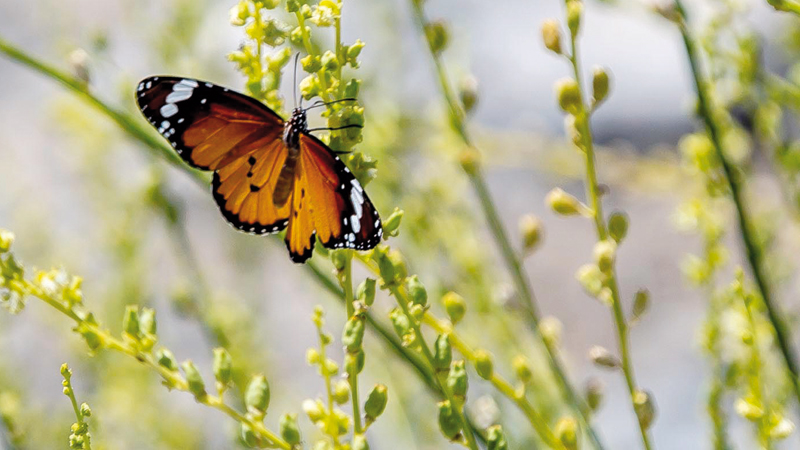


Story by Ray Petersen -
Photos by Lena Petersen -
We are all guilty of not even seeing a wadi until the rains come. After all, they are nothing but a scar on a desolate wasteland, a place to despise when it’s dry, and be fearful of when they are full of rushing, crushing, pounding tons of water, on its way, seemingly, to nowhere.
T E Lawrence, of ‘Lawrence of Arabia,’ fame wrote once, “All men dream, but not equally. Those who dream by night, in the dusty recesses of their minds, wake in the day to find it was vanity: but the dreamers of the day are dangerous men, for they may act on their dreams with open eyes, to make them possible.” It could too be a stunning metaphor for the transformation that takes place in the wadi, after the tumult of the rains, when water has gone again, and nothing dwells. Except that…… if we care to look, to open our eyes, we will find the stuff of dreams, rarely seen, let alone appreciated.
They may not be exactly a riot of color, but the flowers of the wadi do have a delicate beauty, and the colors and tones are magnificent! Even the world renowned Lonely Planet described the diversity of the Sultanates wadis in awed tones, saying, “ribboned with wildflowers, croaking with toads and wheezing in mid-summer with love-sick cicadas…….. likely to leave travelers recalibrating their definition of the desert.”
The raw, earthy colors of sand and clay gild every picture, the geological dark greys, merge seamlessly with a million other shades of grey, no mere fifty shades of grey here! And the browns and reds of the distant Hajar Mountains manage, not only to merge with the sultry landscape, but to give it resonance, a depth of perspective beyond words. Even the scouring of the wadi bed around strong determined trees that have fought for their lives against the torrential forces of nature, add to the dynamic sculpture that is the wadi.
The greens and golds of the wadi flora are far from evident, and certainly not common, but like mushrooms in an English countryside, they are there, and beautifully embellished by white flowers with stems of chartreuse that remind you of the fragile lily in their colors, and another white, simple flower, its bright yellow stamen attracting the bees and wasps from where they nest, or is it hive? They too add their own color, with their darting backs and golds, their hovering and their buzzing dominating the subtle, otherwise silent, scene.
Yet, little or naught prepares you for the majesty or athleticism of the orange and black tiger butterfly, regal as it hangs, persistent and demanding from a tempting floral life source, or another, grey, a more sinister creature evoking appraisal, rather than the tiger’s excitement. However, both are put in the shade, in every possible way, by a delicate white ‘fly,’ graceful and balletic, a character from Swan Lake alongside those from the Game of Thrones and Lord of the Rings! Here, a melody from the lightest of the sopranos, defying the baritone and bass, the strings completing the orchestral maneuvers of the day, or the desert fulfilling the promise of the hors d’oeuvres and entrees.
The wadi may not appear to be magic, but how else do you explain its magic? “In all things of nature,” said the Greek philosopher Aristotle, “there is something of the marvelous.” Take a few minutes to really look around you, and beyond the plastic bags, litter, and detritus of today, find the beauty that Aristotle marveled at, for yourself.
Oman Observer is now on the WhatsApp channel. Click here



